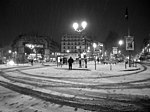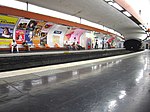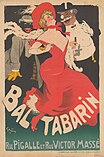Le Rat Mort
1837 establishments in France1838 establishments in France19th century in Paris20th century in ParisBelle Époque ... and 10 more
Coffeehouses and cafés in ParisCorsican mafiaHistory of ParisLGBT culture in ParisLGBT drinking establishments in FranceLGBT history in FranceLesbian culture in FranceLesbian historyMice and rats in popular cultureRestaurants in Paris

Le Rat Mort ("The Dead Rat") was a popular cafe/restaurant and cabaret in Paris in the 19th and early 20th centuries. Located in the Place Pigalle in the Montmartre District, it was frequented by artists, writers, actors, artist models, and prostitutes, and was a gathering place for lesbians in the evenings. Paintings and sketches inspired by the cafe and its customers included work by Toulouse Lautrec, Maxime Dethomas, Auguste Chabaud and Vlaminck Maurice.
Excerpt from the Wikipedia article Le Rat Mort (License: CC BY-SA 3.0, Authors, Images).Le Rat Mort
Place Pigalle, Paris 9th Arrondissement (Paris)
Geographical coordinates (GPS) Address Nearby Places Show on map
Geographical coordinates (GPS)
| Latitude | Longitude |
|---|---|
| N 48.88188 ° | E 2.33745 ° |
Address
LCL
Place Pigalle
75009 Paris, 9th Arrondissement (Paris)
Ile-de-France, France
Open on Google Maps









